Honeywell F300E1019 Handleiding
Honeywell
Niet gecategoriseerd
F300E1019
Bekijk gratis de handleiding van Honeywell F300E1019 (6 pagina’s), behorend tot de categorie Niet gecategoriseerd. Deze gids werd als nuttig beoordeeld door 16 mensen en kreeg gemiddeld 4.5 sterren uit 8.5 reviews. Heb je een vraag over Honeywell F300E1019 of wil je andere gebruikers van dit product iets vragen? Stel een vraag
Pagina 1/6

OWNER’S GUIDE
69-0756-07
F50F and F300E Electronic
Air Cleaners
CONTENTS
Operating Your Electronic Air Cleaner ....................... 2
Getting the Most From Your Electronic Air Cleaner 2
Cleaning Prefilter(s), Cell(s) and Postfilter(s) ......... 3
How Electronic Air Cleaning Works ............................. 5
Before You Call for Service .............................................. 6
Resideo 10 Year Ultraclean Coil Guarantee™ .......... 6
Limited Five-year Warranty ............................................ 7
Product Registration ......................................................... 8
M38810

F50F AND F300E ELECTRONIC AIR CLEANERS
3 69-0756—07
CLEANING PREFILTER(S),
CELL(S) AND POSTFILTER(S)
CAUTION
Sharp edges.
Can cause personal injury.
Carefully handle cell(s) or wear protective gloves to
avoid cuts from sharp metal edges.
Setting a regular cleaning schedule
To ensure optimum performance from the air cleaner, the
prefilter(s) and cell(s) must be cleaned regularly— twice a
year with normal use or more frequently with heavy use.
Use the wash reminder schedule below to help establish
and maintain a regular cleaning schedule. Mount the
wash reminder schedule in a convenient location.
NOTE: You may let the heating or air conditioning sys-
tem operate normally while the cell(s) are being
washed. Simply turn off the air cleaner switch.
Cleaning your Prefilter
1. The quickest and easiest way to clean your prefilter
is to use the brush attachment of your vacuum
cleaner to vacuum the lint off the dirty side of the
prefilter. Greasy dirt may require soaking the prefilter
in a tub or rinsing with the garden hose. Do not wash
the prefilter in the dishwasher or car wash
2. The prefilter should be cleaned every 6 months or
more frequently with heavy use. This will keep the
prefilter clean of air choking lint that can make your
system work harder.
Vacuum the prefilter with a brush attachment, rinse it with
a hose, or soak it in a tub. Do wash the prefilter(s) in not
the dishwasher or car wash.
Cleaning your Cells
1. A quick cleaning of the cells can be done by simply
wiping down the ionizer wires with a damp cloth.
This will help boost the efficiency of the air cleaner
between full cleaning cycles. Ths quick clean can be
done every time the prefilters are cleaned.
2. A full cleaning of the cells will return the air cleaner
to its peak efficiency. An easy way to wash the cells is
in a tub of hot, soapy water. Just soak the cells until
the water cools, agitate and rinse. For details on
cleaning cells, see below for Washing the cell(s) in a
tub or Washing the cell(s) in your automatic dish-
washer.
3. Because the efficiency of the air cleaner remains
high even as it loads up with dirt, a full cleaning of
the cells can be put off for yearly maintenance and a
quick cleaning can be done more often. Those wish-
ing to renew to peak efficiency or with heavier use
may want to wash more frequently.
Replacing your Postfilter
1. The postfilter is an optional filter that boosts the effi-
ciency of the air cleaner. Do not wash the postfilter
because that will neutralize the factory applied
charge.
2. The postfilter should be replaced every six months to
ensure peak performance.
YE
AR
ELE
C
T
R
O
N
I
C
A
I
R
C
LE
AN
E
R
W
A
S
H
R
E
M
I
ND
E
R
S
CH
E
DU
LE
,
M982A
J
F
M
A
M
JJA
S O
N D
I
N
ST
A
LL
A
TIO
N
DA
TE
:

F50F AND F300E ELECTRONIC AIR CLEANERS
69-0756—07 4
CAUTION
Burn Hazard.
Can cause personal injury.
Allow cell(s) to cool completely in dishwasher and
at tend of wash cycle or wear protective gloves.
Washing the cell(s) in your automatic
dishwasher
Hot water can accumulate in the tubes supporting the
collector plates.Tip the cell(s) so these tubes can drain.
IMPORTANT
• Check your dishwasher Owner’s manual. Some
manufacturers do not recommend washing elec-
tronic cell(s) in their dishwashers.
• If the dishwasher has upper and lower arms, posi-
tion the cell(s) carefully to allow good water circu-
lation.
• Be careful to avoid damaging the cell(s) when
placing them in the dishwasher. Broken ionizer
wires or bent collector plates are not covered
under the Warranty.
• Very dirty cell(s), especially from tobacco or cook-
ing smoke, can discolor the plastic parts and the
lining of some dishwashers.This discoloration is
not harmful. To minimize it, wash the cell(s) more
frequently or try a different brand of detergent.
• Do NOT allow the dishwasher to run through the
dry cycle. This bakes on any contaminants not
removed during the wash cycle and reduces air
cleaner efficiency.
1. Put the cell(s) on the lower rack of the dishwasher
with the airflow arrow pointing up. It may be neces-
sary to remove the upper rack. Do not block water
flow to the upper arm.
HINT: Lay a few large water glasses between the spikes on
the lower rack, and rest the cell(s) on them so the spikes do
not damage the aluminum collector blades.
2. Using your regular dishwashing detergent, allow the
dishwasher to run through the complete wash and
rinse cycle. Do not use the dry cycle. To avoid burns,
let the cell(s) cool completely before removing, or
wear protective gloves when removing the cell(s).
Remember that water may be trapped inside the
cell(s) plates. Tip the cell(s) so these tubes can drain.
3. Wipe the ionizer wires and contact board on the end
of the cell using your thumb and forefinger with a
small, damp cloth.
4. Inspect the dishwasher. You may want to rerun the
wash and/or rinse cycle with the dishwasher empty if
you see dirt or residue from washing the cell(s). If
dirt or residue seems excessive, wash the cell(s)
more often or try a different detergent.
CAUTION
Hazardous Chemical.
Can cause personal injury.
Do not splash detergent solution in eyes.
Washing the cell(s) in a tub
• Wear rubber gloves to avoid prolonged detergent
contact with your skin.
• Keep detergent and solution out of reach
of children.
NOTE: Always wash the cell(s) first, then the prefilter(s),
to keep heavy prefilter lint from getting caught in
the cell(s).
1. Use a large enough container, such as a laundry tub
or trash container, to hold one or both cell(s).
NOTE: Sharp corners on the cell(s) can scratch the sur-
face of a bathtub.
2. Dissolve about three-fourth cup of automatic dish-
washer detergent per cell in enough hot water to
cover the cell(s). If the detergent does not dissolve
readily, or forms a scum on the water, try another
brand, or use softened water.
3. After the detergent has completely dissolved, place
the cell(s) in the container and allow to soak for 15 to
20 minutes or until water cools. Agitate them up and
down a few times and remove. Repeat steps 2 and 3,
if necessary, for very dirty cells.
4. Next, wash the prefilter(s) the same way. Empty and
rinse the wash container.
5. Rinse the cell(s) with a hard spray of very hot water;
rinse the tub clean, then fill the tub with clean hot
water and soak for 5 to 15 minutes. Rinse until the
water draining from the cell(s) and prefilter(s) no
longer feels slippery.
6. Soak cell(s) in a final clear water rinse for ten min-
utes.
7. Wipe the ionizer wires and contact board on the end
of the cell using your thumb and forefinger with a
small, damp cloth.
Replacing electronic air cleaner
components
1. Inspect the cell(s) for broken ionizer wires and bent
collector plates. Repair, as necessary, or call your
contractor for service.
2. Slide the prefilter(s) into the upstream prefilter
guides.
3. Slide the air cleaner cell(s) in so the air flow arrow
points downstream and the handle(s) face outward.
4. Firmly close the access door.
5. Turn on the air cleaner. If the cell(s) and prefilter(s)
are wet, the neon light may not come on and you
may hear arcing. If the arcing is annoying, simply
turn the air cleaner off for two to three hours or until
the cell(s) are dry.
Product specificaties
| Merk: | Honeywell |
| Categorie: | Niet gecategoriseerd |
| Model: | F300E1019 |
Heb je hulp nodig?
Als je hulp nodig hebt met Honeywell F300E1019 stel dan hieronder een vraag en andere gebruikers zullen je antwoorden
Handleiding Niet gecategoriseerd Honeywell
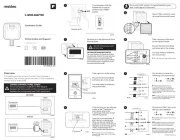
30 Juli 2025
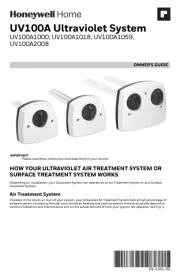
20 Mei 2025

3 Juli 2023

16 Juni 2023

1 Juni 2023

18 Mei 2023

13 Mei 2023

10 Mei 2023

9 Mei 2023

9 Mei 2023
Handleiding Niet gecategoriseerd
- Ubiquiti Networks
- Eizo
- HomeSpot
- Lingg & Janke
- Ninebot
- Maytronics
- Venicci
- Rupert Neve Designs
- Easy Camp
- Lotus
- MyPOS
- Uniprodo
- IVT
- Hayter
- Wilfa
Nieuwste handleidingen voor Niet gecategoriseerd
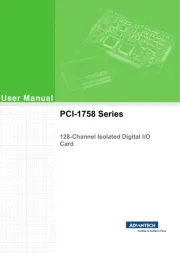
30 Juli 2025
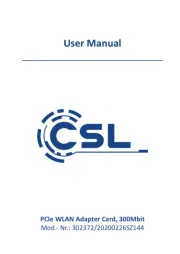
30 Juli 2025
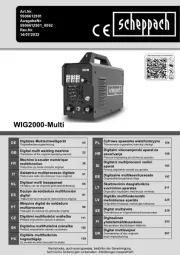
30 Juli 2025
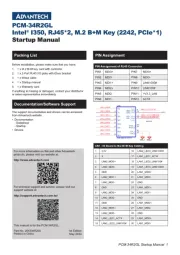
30 Juli 2025
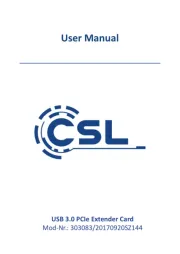
30 Juli 2025
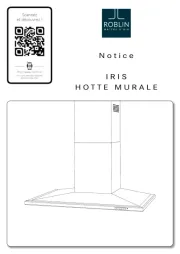
30 Juli 2025
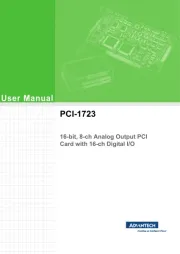
30 Juli 2025
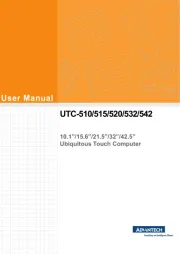
30 Juli 2025
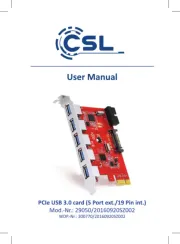
30 Juli 2025

30 Juli 2025